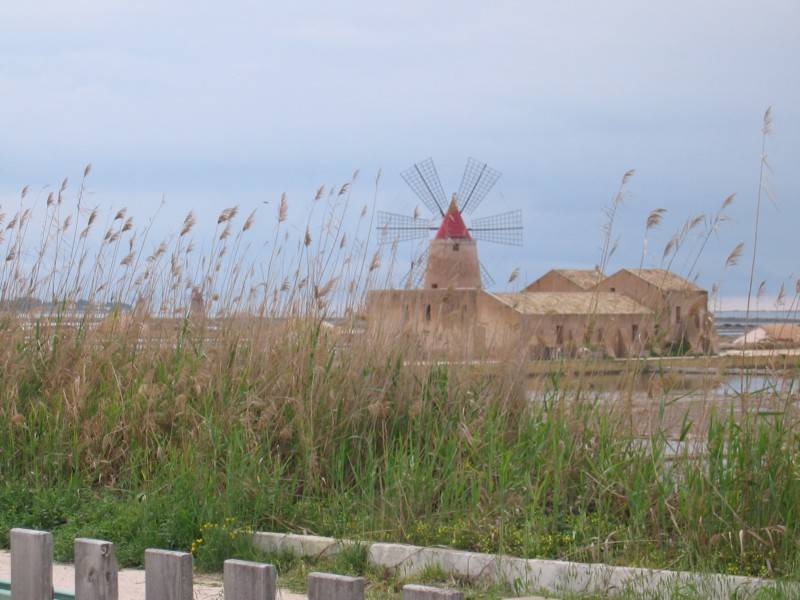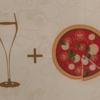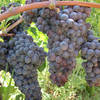The Island in the Sun
Phoenicians, Greeks, Carthaginians, Romans, Byzantines, Arabs,
Today’s Sicilian cuisine reflects these influences, for example, the Greeks introduced the cultivation of grape vines. The Arabs may have had the greatest influence.
From the French there is the tradition of the Monzu (Monsieur jn French, a word the Sicilians could not pronounce). The monzu was a chef in a wealthy home trained in French haut cuisine techniques who used Sicilian ingredients. Many years ago at the Tasca di Almerita winery I had an elaborate meal prepared by one of the last of the monzus who has since passed away.
Michele and I were invited to
It was founded in 1979 to increase the awareness of authentic Italian cuisine, promote the member restaurants and to give culinary scholarships. The current Chairman is Tony May from San Domenico and the President is Gianfranco Sorrentino from Grattopardo both in
What made the trip so interesting was that we were able to taste the best products from all over
Blood
Once in a hotel in
The Lemons of Siracusa
Lemons have been cultivated along the Ionian coast in the Siracusa area since medieval times. They were brought to
It was not until the 17th century that they began to be used as we know it today thanks in part to the Jesuits. The lemons are aromatic with a unique citrus flavor. The Sicilians use lemons on fish, vegetables and grilled meats. The citrons from this area are also exceptional and can be eaten fresh or candied.
The Black Bread of Castelvetrano ( Provincia di Trapani)
Sicilians make some of
.
Pistachios from Bronte (Provinica di Catania)
This variety grows on the rough terrain of Bronte near
bear fruit every other year. The Arabs brought pistachios to
dialect they are called frastuca, a name of Arabic origin. You have to taste them to believe them! I could not stop eating them. We had torrone, pesto, gelato, and several kinds of cookies, all made with Bronte pistachios.
Almonds from the area around Noto (Provinica di Siracusca)
There are three varieties of almonds cultivated around the town of
Pizzauta dAvola, Fascionello nd Romana. We were told that Romana has the best flavor but is a hard sell because of its chunky, irregular shape. Almonds are used in many Sicilian desserts. Almond paste is used in cassata, a cake made with ricotta and sponge cake that we were served all over
Manna (Provinica di Palermo)
Manna is made from a bluish, resinous substance extracted from the bark of ash trees that grow near Castelbuono and Pollina in the Madonie mountains. When dried in the sun, it solidifies into manna, a natural sweetener with a very low glucose and fructose content. The extraction techniques are very ancient and are only done in this region. .We had it in one of our favorite restaurants, Nangalarruni in Castelbuono. One of their specialties was pork tenderloin encrusted with manna. For dessert there were candies made from manna. We liked these so much we took boxes of them home with us.
This unrefined sea salt is produced by evaporating sea water in huge shallow pools near the shore between
Windmills turned by an Archimedes screw were added later in the Middle Ages to help move the water. The salt beds are managed completely by hand. The salt is left to dry in the hot Sicilian sun in large pyramid shaped piles on the beach. These piles turn pink and some are covered with ceramic tiles to protect them from the possibility of rain. The crystals are bigger and dissolve quicker and taste saltier then regular salt though we were told that it is actually less salty because it contains less sodium chloride. All I know is that it made the food taste better.
Chocolate from the Antica Dolceria Bonajuto (City of
The Spanish introduced to
Cannoli (All over
Cannoli probably originated in
When we were in Taromina many years ago, we had cannoli so good that Michele asked what made it so special. The clerk in the bakery replied that it was made with sheep sheep’s milk ricotta and the pastry had been deep fried in lard. Sheep milk ricotta is richer and creamier than that made with cows’ milk and has a tangy taste which gives it a new dimension.
Next time from Sicily: wine, olive oil, hotels and restaurants
Michele and I are hosting a tour to
For information: www.Traveldynamicsinternational.com





































i-Italy
Facebook
Google+
This work may not be reproduced, in whole or in part, without prior written permission.
Questo lavoro non può essere riprodotto, in tutto o in parte, senza permesso scritto.